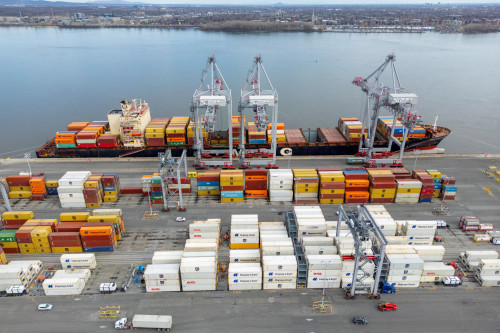By Scott DiSavino
NEW YORK (Reuters) -Oil prices gained about 3% to a one-week high on Thursday on a weaker U.S. dollar and a jump in refinery runs in top crude importer China.
Brent futures rose $2.47, or 3.4%, to settle at $75.67 a barrel, while U.S. West Texas Intermediate (WTI) crude rose $2.35, or 3.4%, to settle at $70.62.
Those were the highest closes for Brent and WTI since June 8.
In the United States, the gasoline crack spread, a measure of refining profit margins, to its highest since July 2022. U.S. diesel futures, meanwhile, rose about 5% to their highest since late April.
The oil market drew support from U.S. reports showing retail sales unexpectedly rose in May and higher-than-expected jobless claims last week cut the dollar to a five-week low versus a basket of other currencies.
A weaker dollar makes crude cheaper for holders of other currencies, which could boost oil demand.
Data on Thursday also showed China’s oil refinery throughput rose 15.4% in May from a year earlier, hitting its second highest total on record.
Chinese demand for oil is expected to keep climbing at an assured rate during the second half of the year, said Kuwait Petroleum Corp’s chief executive.
“The Chinese refinery numbers started the oil price rally. Then, of course, you have the macro situation with the (U.S.) dollar being down in part because of the U.S. Federal Reserve pause in raising interest rate, while in Europe they are still hiking rates,” said Phil Flynn, an analyst at Price Futures Group.
The European Central Bank (ECB) raised interest rates to a 22-year high as expected on Thursday. It signaled further policy tightening, as it battles high inflation.
“The outlook for economic growth and inflation remains highly uncertain,” said ECB President Christine Lagarde.
On Wednesday, the Fed kept interest rates unchanged but signaled at least a half of a percentage point increase by year end.
Higher interest rates ultimately increase borrowing costs for consumers, which could slow economic growth and reduce oil demand.
On the supply side, analysts expect voluntary crude output cuts implemented in May by OPEC+, the Organization of the Petroleum Exporting Countries (OPEC) and allies, and by Saudi Arabia in July, to support prices at a time of strong demand.
UBS expects a supply deficit of around 1.5 million barrels per day (bpd) in June and more than 2 million bpd in July.
“Once these deficits become visible in on-land oil inventories, we expect oil prices to trend higher,” the bank said in a note.
In Iraq, a Turkish energy delegation will meet Iraqi oil officials in Baghdad on June 19 to discuss the resumption of Iraq’s northern oil exports, Iraqi deputy oil minister for upstream affairs, Basim Mohammed, told Reuters.
Turkey halted Iraq’s 450,000 bpd of northern exports through the Iraq-Turkey pipeline on March 25 after an arbitration ruling by the International Chamber of Commerce (ICC).
(Additional reporting by Rowena Edwards in London, Jeslyn Lerh in Singapore and Arathy Somasekhar in Houston; editing by David Gregorio, Kirsten Donovan and Jonathan Oatis)








